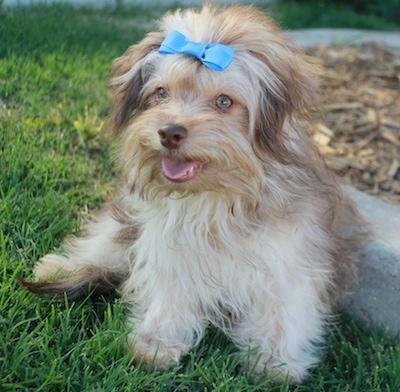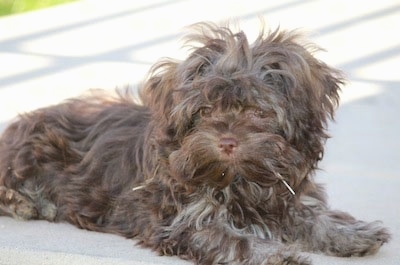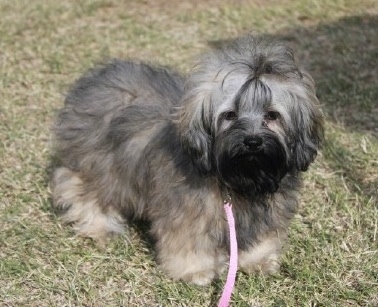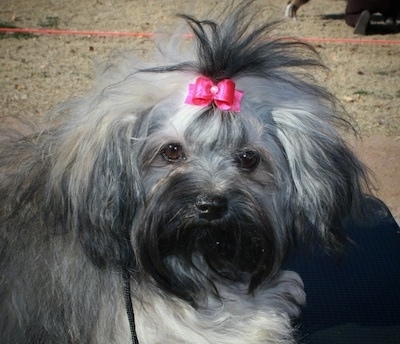
Christian the Russian Tsvetnaya Bolonka at 8 months old, photo courtesy of Bolonka Treasures
(The plural for Bolonka is Bolonki.) The Russian Bolonka is moderately boned and should never appear fine-boned. It is accepted in all colors except white; no more than 20% white is accepted.
Bolonki are sturdy, happy, playful little dogs with an affectionate and loving temperament that is ideal for their role in life. They are intelligent, outgoing, trusting and energetic dogs that will also be content to sit quietly on a lap for as long as it is allowed. They need gentle, firm obedience training. Make sure you are this dog's firm, confident, consistent pack leader to avoid Small Dog Syndrome, human induced behavior problems. Always remember, dogs are canines, not humans. Be sure to meet their natural instincts as animals.
7 - 10 inches (17 - 25 cm)
The body is slightly longer than the height at the withers, just off-square.
This breed is prone to typical small-dog health conditions, including: luxating patella, hip dysplasia, liver shunt, thyroid, heart, eyes. Because of the rarity of the breed this information is not fully documented; however, ethical breeders and owners are asked to health test and submit these results to the OFA and breed health databases.
Bolonki are suitable for people in towns and cities as well as in the country. They are active indoors and will do okay without a yard.
These little dogs, need a daily walk. Play will take care of a lot of their exercise needs, however, as with all breeds, play will not fulfill their primal instinct to walk. Dogs that do not get to go on daily walks are more likely to display behavior problems. They will also enjoy a good romp in a safe, open area off lead, such as a large, fenced-in yard.
About 12-16 years
About 1 to 3 puppies
Regular grooming is necessary. Comb a few times a week and bathe as needed. Shampoo, condition, towel dry until damp then comb with a wide-tooth comb or pick. Minimal blow drying so their characteristic curls form. Hair can be kept off of the eyes with bow or band. This breed tends to be good for allergy sufferers
Russia
Toy

Christian the Russian Tsvetnaya Bolonka as a puppy, photo courtesy of Bolonka Treasures

Russian Tsvetnaya Bolonka puppy with a chocolate coat, photo courtesy of Bolonka Treasures

Sally the Russian Tsvetnaya Bolonka puppy, photo courtesy of Bolonka Treasures

Sally the Russian Tsvetnaya Bolonka as an adult, photo courtesy of Bolonka Treasures